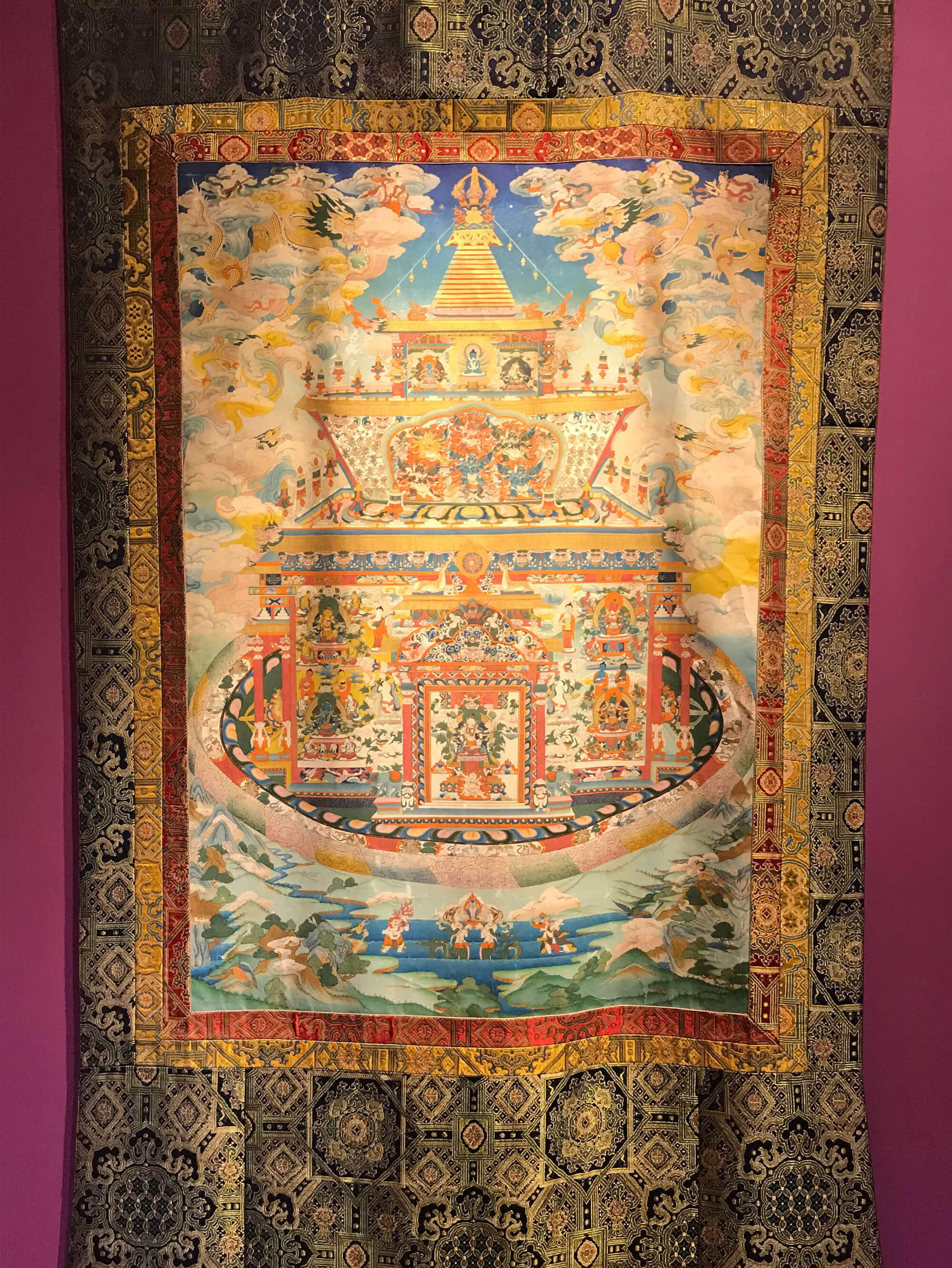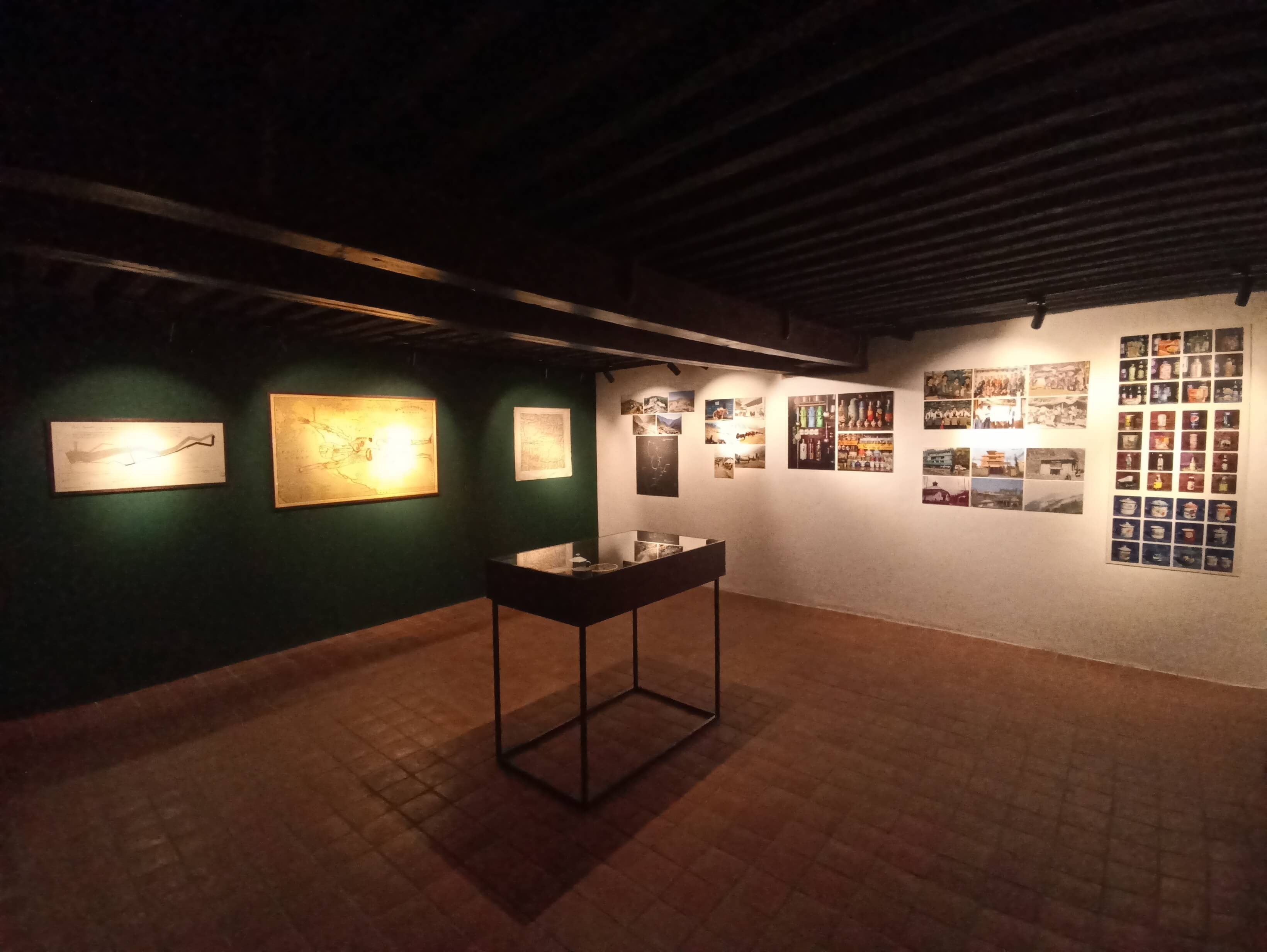Atlas of art in a world in motion

At one of the five Kathmandu Triennale 2077 venues, artists from all over the world have converged with diverse expressions of cartography.
Curated by the team of exhibition curators, Sheelasha Rajbhandari, Hit Man Gurung and Cosmin Costinas, this show of map art ranges from the cosmic to the subconscious, literary to abstract, and ties together the themes of roots, kinship, freedom and exploration.
On entering the Bahadur Shah Baithak in Patan, the first display is Liu Kuo-Sung’s ink, acrylic and collage on paper, titled The Ring B (pictured below). A section of the world spreads across the bottom half of the frame, over which a rising circle is flanked on both sides by crescent moons. And at the top, like on a banner, is Planet Earth against a black field.

In 1972, the crew of Apollo 17 took the famous Blue Marble image of the Earth, which inspired Liu to create The Ring B a year later. This painting juxtaposes the earth shaped by the millennia of human imagination with a photograph taken from 29,000km away in space. Human traditions, myths and history approach the actual image for a cosmic rendezvous.
Meanwhile on the wall opposite sits Untitled by Mary Dhapalany, from Ramingining, Northern Territory in Australia (detail pictured below, left). A weaver and an actress, Dhapalany work is rooted in the Yolŋu’s traditional nganiyal (woven mats) that have deep ritual, ceremonial and practical significance.
Untitled is an iridescent pandanus mat with five spiralling circles. On the wall, these look like eyes, or waves, upon which travel knowledge and stories from one generation to another, intricately weaving the complex threads of family, relations, territories and bodies. And as each loop joins and encloses another, nothing and no one is left behind.
Then comes Urgen Dorje Sherpa’s 100 Peaceful and Wrathful Mahayoga Deities Mandala (detail pictured below, right), a large thanka on the right that is the visual representation of the Bardo – ‘liminal state of existence between death and rebirth’.
The mandala rises laterally instead of the usual circular structure, as seen from above, and depicts the tantra concerning life and death.
This is a guide for departed souls to a swift and positive rebirth – another ‘map’ that transcends to show us a geography beyond what is tangible. Together, the three artworks set the tone for the rest of the exhibition, punctuated only by changing landscape and styles.


We are invited to look beyond the contemporary worldview of maps as the affirmation or rejection of people’s expansionist ambitions. Cartography is borne of the desire for exploration and discovery – turning the pages of an atlas, poring over the colours, running fingers along lines and the words to travel to previously remote and unknown places.
At the exhibition, these places fly out of the pages of books (Youdhistir Maharjan’s Without a Map series) and memories (Uma Shankar Shah’s Railway Station of Janakpur and NJJR) and draw attention to the un- and re-learning to understand one’s own culture and contours of geography.

One such piece is Silata (pictured above), an instrument for divination used in Himalayan astrological practices. The various quadrants are examined to read and calculate an individual’s past, present and future.
The practice may now feel obsolete, yet it is strikingly familiar to many Nepalis who most likely had a cheena drawn at birth depicting the dimensions of the universe and their place in it.
Silata is among the several pieces in the exhibition that remind us that maps are not limited to the ground beneath our feet. Untitled (WTEIA2) by Daniel Boyd references to the stick-charts of the Marshall Islands used by indigenous communities for seafaring.
These depicted the positions of islands, but were never taken on voyages. Instead, they were memorised, creating a vastly different form of knowledge transmission.
The pieces by Nikau Hindin represent Māori skymaps based on the positions of celestial bodies. On a more abstract side, Wing Poso’s Interior is a powdered herbs, Styrofoam and steel installation depicting the interconnectedness of the microscopic and macroscopic world, of physics and philosophy, individual lives and the universe.

Nepali Power by Köken Ergun and Tashi Lama (pictured above) is a collaboration between Istanbul, Kathmandu and Bhaktapur, inspired by the Belt and Road Initiative (BRI) set forth by China in 2013 to build global connectivity. The vibrant triptych hangs gloriously in the middle of the room, depicting rich possibilities and precautions.
On one panel, water flows from the Himalaya, replenishing South- and Southeast Asia, as electricity travels along transmission lines. Others reference the environmental and political consequences, with scales running along in loops like snares. In the middle hangs ‘Nepali Power’: whether an authentic slogan or heavy propaganda, it is left to interpretation.
On the floor below in a room that feels like a railway carriage or a caravan (pictured below), is Nyima Dorjee Bhotia’s Where the Fox Settles. The collection of photographs, archival materials, travel documents, a transistor and an abacus, and other artefacts create a real cabinet of collective history.
Based in the village of Walung in north-eastern Nepal, this archaeological exploration recounts Himalayan stories in a global context – set next to the figurative map of the French Army’s losses in the Russian campaign 1812-13, 1869, and The Man of Commerce by AF McKay. The latter quite literally transposes the human anatomy as a ‘cartographic metaphor’ to describe railway lines and economic exchange across America and to Europe.

The theme of decolonisation and anti-imperialism runs deep in the exhibition, re-evaluating the misinterpreted evolutionary principle of the ‘survival of the fittest’ that justifies genocides throughout history.
The European worldview that led to enslavement and exploitation, erasing traditions, generations of history and practices is carefully dissected rather than mechanically reiterated. It mirrors Nepal’s own exclusion of indigenous communities.


The language of map-making has seen many transformations throughout history, moving from a limited, flat point of view to spherical and colour-coded, with mathematical and imaginary lines criss-crossing.
But what is a map, really? How can the limitless expanse of our imagination and experience be bound? And how can fences and walls supersede nature’s rivers and mountains?
This exhibition is an expression of a borderless globe, where unique and diverse ideas find companions. Visitors are made startlingly aware that Nepal is no longer isolated, no longer insular. The artistic voices here are part of the true Theatrum Orbis Terrarum – ‘Theatre of the Orb of the World.’

Read also: Nepal art debut in Venice
Kathmandu Triennale 2077
11 February - 31 March 2022
All venues open 7 days a week except Sundari Chok in Patan (closes at 2:30PM on Monday, closed on Tuesday)
Bahadur Shah Baithak, 10AM - 6 PM
Patan Museum, 10:30AM - 4:30PM
Nepal Art Council, 10AM - 6PM
Siddhartha Art Gallery, 11AM - 5PM
Taragaon Museum, 10 AM - 6PM
Please wear masks.
writer




